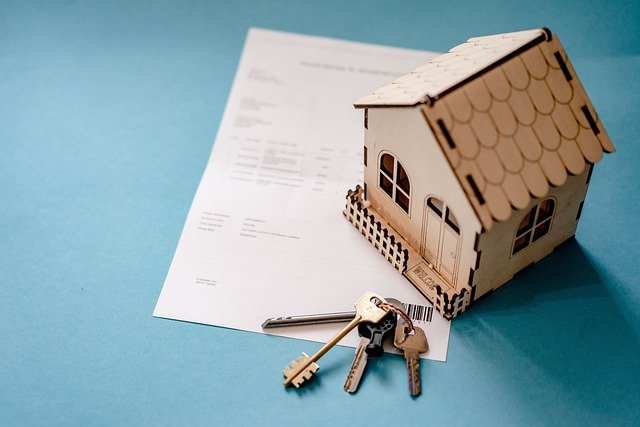Rent to Own Homes: Alternative Path to Homeownership
Rent to own homes provide an alternative pathway to homeownership for individuals who may not qualify for traditional mortgages immediately. This housing arrangement combines elements of renting and buying, allowing tenants to eventually purchase the property they've been renting through a structured agreement. The concept has gained attention as housing costs continue to rise and traditional financing becomes more challenging for some buyers to obtain.

What is Housing with Option to Purchase?
Housing with option to purchase, commonly known as rent-to-own, is a contractual arrangement where renters pay monthly rent while building toward eventual homeownership. The agreement typically includes two main components: a rental lease and an option to purchase the property at a predetermined price within a specified timeframe. A portion of the monthly rent payment often goes toward a future down payment or purchase credit.
These arrangements usually require an upfront option fee, ranging from 1% to 5% of the home’s purchase price. This fee secures the tenant’s right to buy the property later and is typically non-refundable if the purchase option isn’t exercised. The rental period commonly lasts between one to three years, giving tenants time to improve their credit scores, save additional funds, or resolve other financial obstacles preventing immediate homeownership.
How Senior Rent-to-Own Home Programs Work
Senior rent-to-own programs cater specifically to older adults seeking homeownership or housing stability later in life. These programs often feature modified terms that account for seniors’ unique financial situations, including fixed incomes, retirement savings, and potential healthcare expenses.
Many senior-focused rent-to-own programs offer longer rental periods, sometimes extending up to five years, providing more time for financial preparation. Some programs also incorporate age-related benefits, such as reduced option fees or more flexible credit requirements. Certain organizations partner with senior housing developments to offer rent-to-own opportunities in age-restricted communities.
The monthly payments in senior programs may be structured differently, with smaller rent credits or alternative arrangements that work better with Social Security benefits or pension payments. These programs often include counseling services to help seniors understand the financial implications and legal aspects of the agreement.
Advantages and Considerations of the Senior Rent-to-Own Model
The rent-to-own model offers several advantages for seniors pursuing homeownership. Primary benefits include the ability to lock in a purchase price, protection against market price increases, and time to improve financial standing. Seniors can test-drive the property and neighborhood before committing to purchase, ensuring the home meets their long-term needs.
Monthly rent credits help build equity-like savings toward the eventual purchase, and many agreements allow seniors to make improvements to the property during the rental period. This arrangement can be particularly beneficial for seniors with good income but limited savings for a traditional down payment.
However, significant considerations exist. Rent-to-own properties often cost more than comparable rentals, and the purchase price may exceed current market value. If seniors cannot complete the purchase, they forfeit the option fee and any rent credits accumulated. Maintenance responsibilities may fall on the tenant, depending on the agreement terms.
| Program Type | Provider | Monthly Cost Range | Key Features |
|---|---|---|---|
| Traditional Rent-to-Own | Home Partners of America | $1,200-$2,500 | 3-year lease option, rent credits |
| Senior-Focused Programs | Local Housing Authorities | $800-$1,800 | Extended terms, counseling services |
| Private Investors | Various Individual Owners | $1,000-$3,000 | Flexible negotiations, varied terms |
Prices, rates, or cost estimates mentioned in this article are based on the latest available information but may change over time. Independent research is advised before making financial decisions.
Legal and Financial Protections
Understanding the legal framework surrounding rent-to-own agreements is crucial for seniors considering this option. Most states regulate these transactions, but laws vary significantly regarding disclosure requirements, contract terms, and consumer protections. Seniors should review all documentation carefully and consider consulting with a real estate attorney before signing.
Financial protections may include escrow accounts for option fees, clear documentation of rent credit calculations, and specific procedures for exercising the purchase option. Some agreements include provisions for contract extensions if circumstances prevent the original purchase timeline from being met.
Making an Informed Decision
Seniors considering rent-to-own arrangements should thoroughly evaluate their financial situation, long-term housing needs, and local housing market conditions. Comparing the total cost of the rent-to-own agreement against traditional renting or buying scenarios helps determine if this option provides genuine value.
Professional guidance from housing counselors, financial advisors, or real estate professionals can provide valuable insights. Many communities offer free or low-cost housing counseling services specifically designed to help seniors navigate complex housing decisions.
Rent-to-own homes can serve as a viable pathway to homeownership for seniors who need time to prepare financially or want to secure housing in a rising market. However, these arrangements require careful consideration of terms, costs, and personal circumstances to ensure they align with long-term housing goals and financial capabilities.




